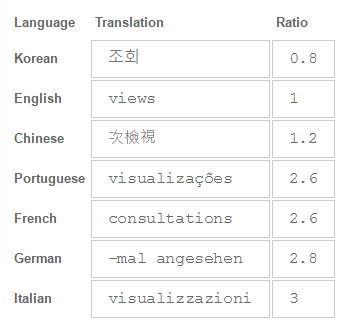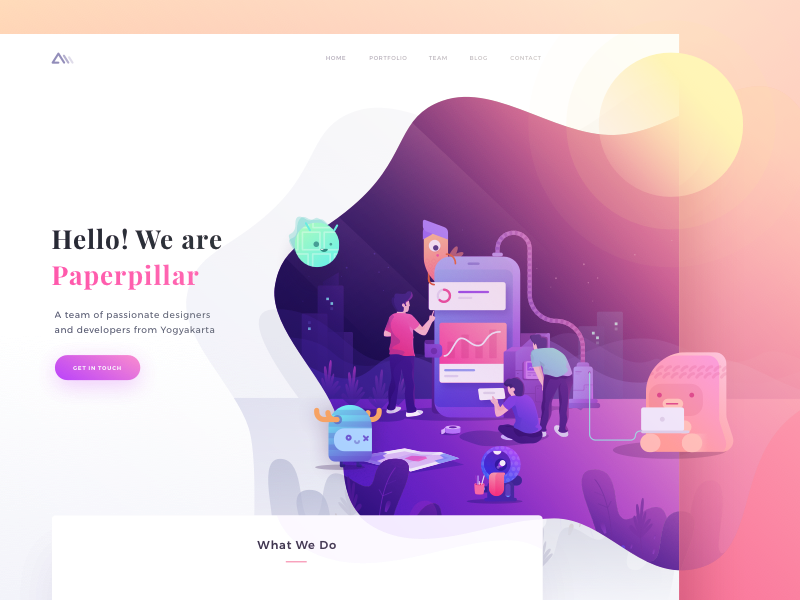Attention is the currency of the twenty-first century. That’s why having an impeccable and engaging design, along with excellent user experience is absolutely essential in the tech ecosystem today, whether you’re running a website or an app.
Localization (l10n) is one of those things we attempt in order to make our product more appealing and accessible to users in another country, but things can go haywire very quickly. When localized poorly, an interface can become ambiguous and misleading, if not unusable. In this article, we’ll look into a couple of ways a poorly executed localization can mess up your customers’ user experience, and some suggestions on how it can be avoided.
1. Lack of space ruins text
It is commonly known that once you start localizing your interface, you should begin obsessing with space as early as possible. The reason is that there is a large variety of languages that are more demanding, regarding text, compared to English.
If we were to look at European languages exclusively, we could easily say that German, Italian, French, Portuguese, and Romanian usually take more letters to describe the same term, compare to its English analog.

It is often the case that when designers fail to allocate sufficient space for translated terms, localization specialists are forced to look for synonyms that don’t express the point as clearly. This may lead to an ambiguous interface that will most definitely ruin the user’s flow throughout the interface.
A pretty straightforward expression like “buy one, get one free,” which is praised by marketers for its brevity, might not work out as well in other languages. Once translated into French, you’ll end up with an exhausting “achetez-en un, obtenez-en un gratuitement,” which takes up over twice the same amount of space. An improperly optimized layout will fail to accommodate a right-to-left language as well.
2. Inconsistency in terminology
Poorly localized interfaces very often feature a variety of terms for the same concept, like “upload video” and “submit a clip.” Even though this won’t prevent the user from successfully interacting with the interface, it may pose a threat to the user experience.
This can often happen when there is a non-centralized team of translators working on the localization. Similarly, it might be the case that the company that has ordered the translation hasn’t provided the localization professionals with the necessary glossary and context.
3. Atonality
Over the years, user experience has a defined an evident need for a brand voice — this is how UX writing came to be. The brand’s tone of writing and copywriting is one of the things that users associate with. Once customers build an emotional connection with a product, a sudden shift in the tone could have adverse effects on the user base and their experience with the product.
Envision a brand that has a very distinct approach towards writing and positioning, like MailChimp for instance, and them shifting towards a more authoritative and cold tone.
“Failing to provide translators with a detailed context on the company’s positioning and approach towards their customers dramatically increases the chances of misrepresenting the brand’s voice.” — the CEO at Pick Writers.
This is also problematic because the many international users start interacting with the product when it’s still in its English version, and only then move on to the localized one, once it becomes available.
4. Cultural inadequacy
At the same time, it is essential that we scan for potential issues with a brand’s tone in the market that the localization is performed for. It is often the case that common American advertisements may be too aggressive for the European or Asian market. In some cultures, people may find it slightly uncomfortable if the text of the interface is too direct.
For instance, Russian has two different forms of the second singular person, the first one is commonly used for people that are your equals, the second one is used for superiors and elders. Using the former in a business setting or on a website will most certainly impact the user’s experience with the product or website.
5. One country, many languages
A commonly held misconception is that the residents of a particular country are monolingual. Some reports suggest that on average 56% of people are
bilingual. This indicates that although the vast majority of citizens of a said country speak the official language, not necessarily all of them are comfortable with using it specifically.
A large number of post-Soviet countries have large percentages of residents that prefer Russian over the official language. That is why, for instance, if someone were to localize an interface for a country like Kazakhstan, a Russian interface would be preferable. Not providing a Russian version would partly alienate a part of the potential users in that specific country.
By localizing a product, the central idea is not only to adapt the linguistic elements to the standards of a particular country or region. Along with that, it is our responsibility to be mindful of the countries cultural and political past. Not taking such aspects into account may sway large numbers of users from using a product, simply because it doesn’t suit their immediate needs.
Conclusion
L10n is commonly regarded as a highly complicated process, and it should only be attempted if the company has sufficient time and funds to localize their product properly. Failing to do so very often results in poor user experience and lousy ROI; and the losses are quite impressive, considering that a team of translators is by no means an inexpensive affair.
The take-home message
It is imperative that your interface has sufficient space in order to accommodate words from more verbose languages. Similarly, it is essential to maintain the same terminology throughout the entire platform.
Customers care about tone. However, it is crucial that the brand’s voice remain within the limits of cultural decency. And lastly, we need to take care of the users that speak the secondary languages of the market we’re localizing the product for, not just the ones that speak the official language.
Banner Illustration by Anna Orlova
Author Bio
Kristin Savage nourishes, sparks and empowers using the magic of a word. Along with pursuing her degree in Creative Writing, Kristin was gaining experience in the publishing industry, with expertise in marketing strategy for publishers and authors. Now she had found herself as a freelance writer. You can find her on Facebook and Medium.



